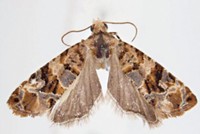Advertisement
Grab your lab coat. Let's get started
Welcome!
Welcome!
Create an account below to get 6 C&EN articles per month, receive newsletters and more - all free.
It seems this is your first time logging in online. Please enter the following information to continue.
As an ACS member you automatically get access to this site. All we need is few more details to create your reading experience.
Not you? Sign in with a different account.
Not you? Sign in with a different account.
ERROR 1
ERROR 1
ERROR 2
ERROR 2
ERROR 2
ERROR 2
ERROR 2
Password and Confirm password must match.
If you have an ACS member number, please enter it here so we can link this account to your membership. (optional)
ERROR 2
ACS values your privacy. By submitting your information, you are gaining access to C&EN and subscribing to our weekly newsletter. We use the information you provide to make your reading experience better, and we will never sell your data to third party members.
Environment
One-pot synthesis yields grapevine moth sex pheromone
Ecofriendly vineyard pest control made more efficiently by new process
by Louisa Dalton
September 14, 2017

The European grapevine moth (Lobesia botrana) spoils vineyard fruit across the globe. One of the most effective weapons against the widespread pest is the moth’s own sex pheromone. When sprayed into the air around the grapevines, it leads males on a fruitless chase to find females, disrupting mating. However, the pheromone is about 60% more expensive than traditional pesticides. Now, a partnership of industrial and academic researchers has come up with a less costly one-pot synthesis and is making the pheromone on an industrial scale (Org. Process Res. Dev.2017, DOI: 10.1021/acs.oprd.7b00206).
Sex pheromones make excellent compounds for ecofriendly pest control because they target particular insects and pose no risk to humans or other beneficial insects. But the European grapevine moth pheromone, (7E,9Z)-dodecadien-1-yl acetate, is expensive. The standard synthetic route to the pheromone starts with a pricey eight-carbon compound and requires isolating four intermediates. The process yield is only 11% with 80% isomeric purity.
Olivier Guerret, head of biocontrol and vice president at M2i Life Sciences, helped devise a new and simpler synthesis based on a cross-coupling reaction between a dienol phosphate and a Grignard reagent. Often, such a coupling requires expensive palladium catalysts. However, Guerret collaborated with Gérard Cahiez of Chimie ParisTech, who knew how to replace palladium catalysts with less expensive iron ones. Their two-step route starts with cheaper six-carbon backbones, proceeds all in one pot, and has an 85% yield with 80% isomeric purity.
M2i is now selling raw pheromone to distributors. The researchers have since improved the isomeric purity beyond what they reported and are working on a microencapsulated product that gradually releases pheromone when sprayed on grapevines. That formulation should cost the same as conventional pesticides, Guerret says.






Join the conversation
Contact the reporter
Submit a Letter to the Editor for publication
Engage with us on Twitter